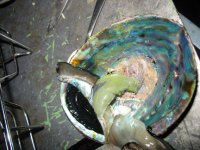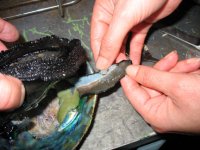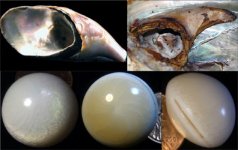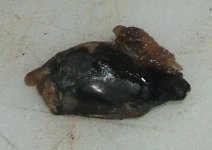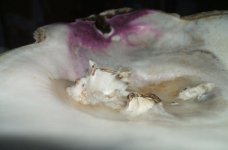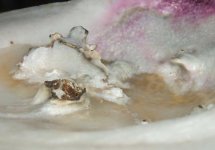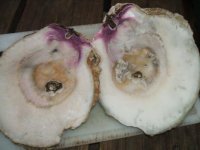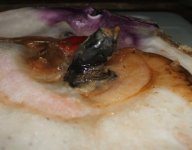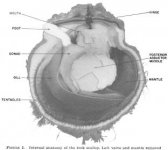By antinuclear you mean apoptosis Dave?
Perhaps, but not entirely. Apoptosis is the programmed death of cells which occurs naturally in multicelled organisms. In cases where apoptosis is premature or accelerated, then there is evidence of antinuclear behavior.
Hemocyte phagocytosis represents the main process of the entire cell defense system and is constituted by different phases including recognition, adhesion, ingestion, destruction and elimination of foreign cells. Mollusc hemocytes also have important
functions in transport of nutrients, wound/shell repair, and removal of catabolic products or pollutants.
The greater portion of pearl nucleations fail when excessive counts of hemocytes surround the graft. Usually by excessive bleeding. Sometimes grafts fail when surrounded by gametes, as the gonad is damaged during the operation.
This is from Roch, 1999: (I've highlighted relevent points)
HUMORAL DEFENSE SYSTEM
Invertebrates possess aspecific and innate immune mechanisms, and they are
lacking
in immune memory following the first encounter with a pathogen. Molluscs have
humoral and cellular immunity, and the humoral system is constituted by lysosomal
enzymes, agglutinins, lectins and antimicrobial peptides. Nevertheless, cellular immunity
seems to perform the main role in shellfish immune processes.
Lysosomal enzymes (b-glucuronidase, acid and alkaline phosphatase, lipase, aminopeptidase and lysozime)
are comprised especially in granular hemocyte lysosomes
and their release into serum depends on cell degranulation during phagocytosis
(Pipe, 1990). Lysosomal enzymes also possess digestive function as indicated by their
abundance in the stylus and digestive gland.
In fact, digestive and defense functions
could act contemporaneously because filtered bacteria represent nourishment for
marine bivalves, so enzymes present in the digestive tract hydrolyze microorganisms
performing both functions at the same time. Agglutinins have been found in many
mollusc tissues and these glycoproteins act as opsonins against different types of
erythrocytes (hemagglutinins) and other cells such as bacteria, protozoa and algae
(Chu, 1988). Lectins represent agglutinin-like molecules and are present in the hemolymph
and in the hemocyte membrane; they have a specific opsonizing function in
mollusc defense mechanisms such as hemocyte aggregation and foreign cell agglutination.
In particular, lectins are specific for hemocyte and bacteria glycoconjugates, so
promoting recognition of foreign cells. However, the biological significance of the
different carbohydrate specificities is not yet known, in fact most invertebrate lectins
are heterogeneous
and may also bind other ligands (Tunkijjanukij et al., 1998).
Antimicrobial peptides have been discovered in hemolymph and mussel hemocytes,
and have been classified as defensins, mytilins, myticins and mytimycin. These compounds
act on
a rather broad spectrum of microbial organisms and their activity has
been shown outside hemocyte or in phagocytosed bacteria (Mitta et al., 2000).
To to summarize my point, when infections occur, otherwise healthy cells can be collaterally affected, whether by the pathogens themselves or incidentally by other blood components.


